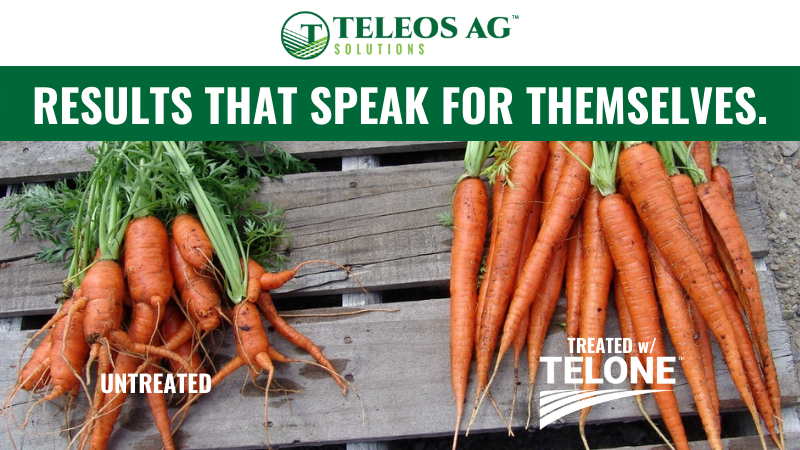Help On The Way Citrus Growers Can Truly Tap Into
Planning requires a forecast of demand. Florida citrus nurseries are in the unenviable position of assessing demand for new trees. Though some nurseries report relatively consistent demand, others are experiencing order cancellations and grower uncertainly. Disease pressure, confusion about rootstock choices, capital limitations, lagging rootstock availability, and the wait for effective bactericides and therapies are all part of a complex decision process. The unintended consequence may be waning grower confidence. Help with any one of these factors may tilt the scales just enough to incent new plantings. Enter the Tree Assistance Program.
Agriculture Secretary Tom Vilsack announced USDA has made new financial assistance available to Florida citrus growers for the removal of trees afflicted with HLB and for replanting groves with new healthy stock. Vilsack commented,“We must ensure that Florida’s citrus industry can weather this storm while a more permanent solution to this problem is developed. The key to the citrus industry’s survival is getting new trees in the ground, and we’re doing everything we can to help with that.” The support comes through USDA’s Tree Assistance Program (TAP), administered by USDA’s Farm Service Agency (FSA).
The foundation of this program was laid through the tireless efforts of state FSA Executive Director Rick Dantzler, Michael Sparks (Florida Citrus Mutual), and Douglas Bournique (Indian River Citrus League). This program stands to positively contribute to the industry’s recovery. Dantzler commented that “our goal is to get as many of the six million citrus trees needed in the ground as quickly as possible.”
Program Particulars
Under this program, Florida citrus growers will be eligible for up to 50% of the cost of the removal of diseased trees and site preparation, 65% of the cost of replanting and labor, and 65% of the cost of new trees. Losses must have occurred on or after Oct. 1, 2011, and individual stands must have sustained a mortality loss of 15% after adjustment for normal mortality. Trees that are no longer commercially viable may be considered to have met mortality.
Growers are encouraged to contact their local USDA Service Center (fsa.usda.gov/fl) for information on the types of records needed before applying. The application involves a voluminous amount of paperwork — so advanced planning is advised.
The program does include some restrictions and parameters for eligibility. No person or legal entity, except joint ventures or general partnerships, may receive more than $125,000 in assistance. Individuals or entities with average gross income exceeding $900,000 are ineligible for payment. Applications covered after Sept. 30, 2014 are subject to a payment reduction of 7.3% as required by the Budget Control Act (aka, sequestration). But, 93% is much more helpful than 0%.
Customized To Handle HLB
What makes TAP particularly unique is rather than replacing only those trees that are biologically dead, it provides replacement for trees no longer commercially viable.
Since loss to greening is a gradual process, mortality may be assessed over a six-year period. Loss begins when the grower first recognizes the disease and ends when infected trees either die or are no longer economically viable. In other words, citrus growers may choose one of the following options:
1. Apply for TAP during any year in which the stand sustained a mortality loss in the excess of 15% after adjustment for normal mortality.
2. If tree mortality of 15%, after adjustment for normal mortality, has not been met, accumulate mortality over multiple years.
Trained FSA field staff members will be available to assist growers in making these determinations.
Additional Eligibility Requirements
The applicant must have owned the eligible trees — though it is not required to have owned the land on which the trees were located.
Grower must replace eligible trees within 12 months from the date the application is approved. This will require careful planning at the nursery level.
Food For Thought
- This program does not cover abandoned groves. At presstime, the term “abandoned” had not been defined. Efforts are under way to include groves that were in production on Oct. 2, 2011. Stay tuned for more information on this.
- The program was conceived as a means of replacing citrus trees. However, the program does permit replacement to alternative tree crops that are appropriate to the growing region.
- The replacement trees do not have to be the same variety as the original trees.
- Though growers can set replacement groves in any density desired, growers are only compensated for trees that are removed.
- Growers must apply by Jan. 31, 2015 for assistance for trees removed from Oct. 1, 2011 through Dec. 31, 2014.
Notice To Nurseries
Though some of the larger grower operations will be ineligible to participate, the TAP program has the potential to enhance demand for trees. Presentations have been made at trade organization meetings and almost 1,000 growers have already made inquiries at FSA. However, it is difficult to reach everyone.
Nurseries remain a primary source of information for many growers. Nurseries would be well served to inform their customers of this opportunity. This is not an application that can be completed overnight. If the January deadline is applicable growers need to start the process immediately.
Variety Show*
Take advantage of the upcoming UF/IFAS Citrus Variety Displays and provide valuable input stakeholders need to improve the fruits of your labor.
- Dec. 11, 2014 CREC, Lake Alfred
- Jan. 15, 2015 IRREC, Ft. Pierce
- Feb. 17, 2015 CREC, Lake Alfred
*All events start at 10:00 a.m.










